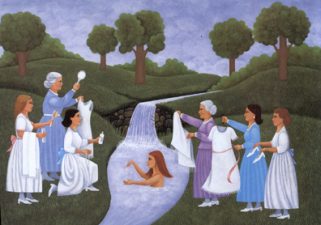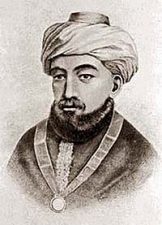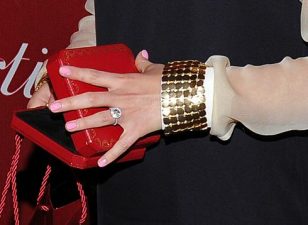Disney makes genies sound like fun and games but genies, or jinns, in the Middle East are serious business. Especially if one has moved into your house and won’t leave the couch. Miriam has written some great stories on jinns and how to get rid of them.
Now, right out of the legends, archeologists in Israel discover a rare find –– one of a few of the world’s rarest existing genie lamps.
The bronze oil lamp, shaped like a grotesque face that is cut in half, was recently discovered in the City of David National Park.
Israel Antiquities Authority archaeologists, Ari Levy and Dr. Yuval Baruch, believe that the lamp, which was discovered in the foundations of a building built upon the pilgrimage road, was intentionally deposited in order to bring good fortune to the building’s residents:
“The offering of this lamp may attest to the importance of the building, which may have been linked to the protection of the Siloam Pool, the city’s primary water source.”

This special bronze lamp was deliberately buried in the foundations of the building, dating to the Roman Period, subsequent to the destruction of Jerusalem and the Second Temple in 70 CE (late 1st-early 2nd century CE). In the opinion of the site’s archeologists, the lamp was a foundation deposit (a ritual burial of an offering in the foundations of a building).
Foundation deposits (offerings) were prevalent in the ancient world, and were intended for luck, and to ensure the continued existence of the building and its occupants, and they were usually buried under the floors of buildings or foundations, explained the researchers.
In actuality, the artefact is half of a lamp. It was poured into a sculpted mold that was shaped like half of a face of a bearded man with a grotesque appearance. The tip of the lamp is shaped like a crescent moon, and the handle is shaped like the Acanthus plant, known as sea holly or bear’s foot. The decoration that appears on the lamp is reminiscent of a common Roman artistic motif, similar to a theatrical mask.
According to the archaeologists, “This lamp is a very unique find, and as far as we know, the first of its kind discovered in Israel. The uniqueness of the current object is that it is only half a face.”
Researchers are debating what this means. It may have been simply a practical matter. The lamp may have been attached to a flat object or wall, serving as a wall lamp, but the possibility that it was an object used in some sort of ceremonial ritual should not be ruled out.
Speculating over the meaning behind the lamp

According to archaeologist Ari Levy, director of the excavations on behalf of the Israel Antiquities Authority, “The building where the lamp was discovered was built directly on top of the Pilgrimage Road at the end of the Second Temple period.
The construction of such a massive structure in the period after the destruction of Jewish Jerusalem demonstrates the importance of the area even after the destruction of the Second Temple. It is possible that the importance of the building, and the need to bless its activity with luck by burying a foundation deposit, was due to its proximity to the Siloam Pool, which was also used in the Roman period as the central source of water within the city.”
After the bronze lamp was found, it was handed over for treatment and preservation in the metal laboratory of the Israel Antiquities Authority and put in the care of Ilia Reznitsky.
During the treatment, another exciting discovery was made – inside the lamp was its wick, which was unusually preserved. The wick, which is a very rare find, was submitted for examination by Dr. Naama Sukenik, curator of organic materials at the Israel Antiquities Authority. Upon microscopic examination, Dr. Sukenik identified that it was a wick made of flax. Future stages of research will try and identify any oil residue left on the wick, which will help determine whether the lamp was used, and if so, what oil they used to light it.
There was no mention if the lamp was rubbed and if magic genies popped out of it. Yet.




